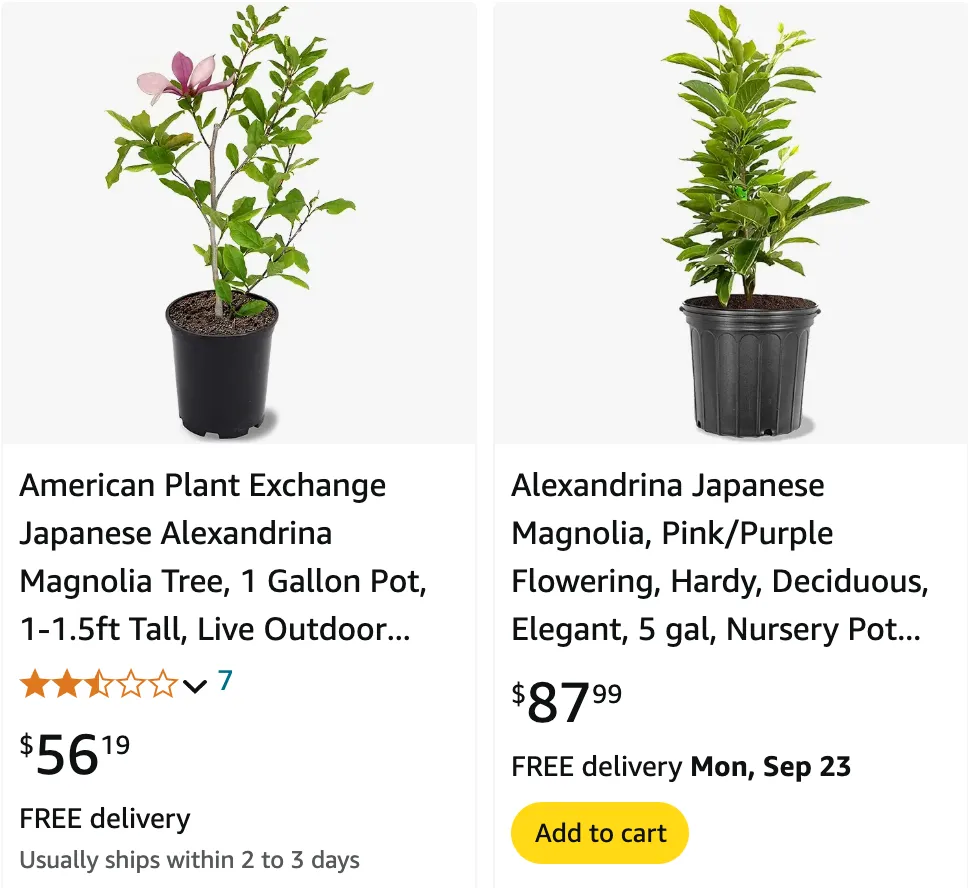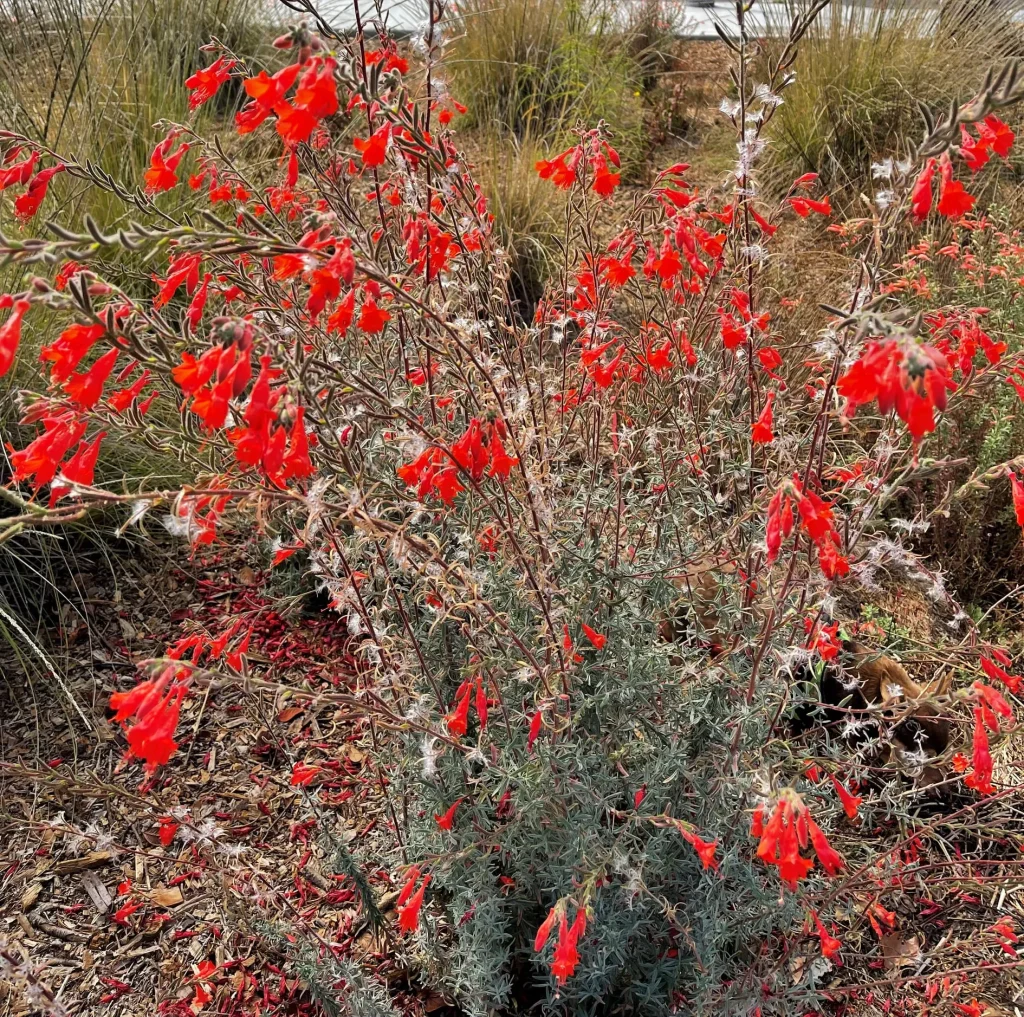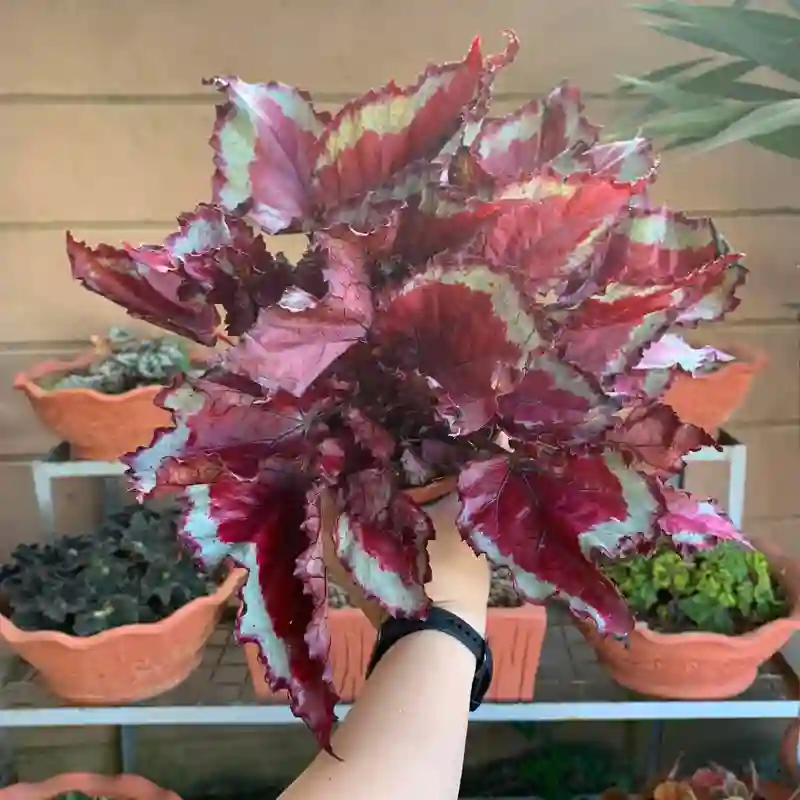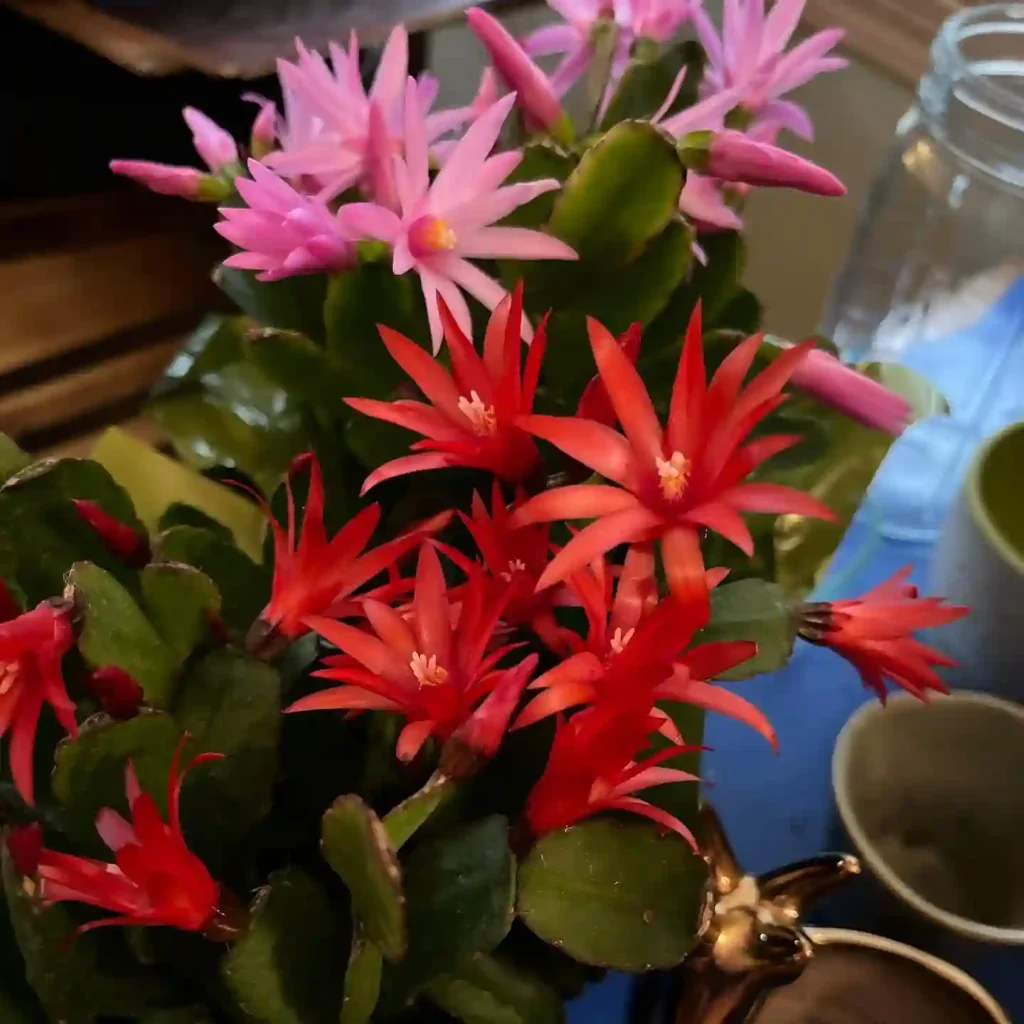
What is Alexandrina Magnolia?
The Alexandrina Magnolia is a beautiful deciduous tree known for its stunning cup-shaped blooms that range from pink to purplish hues on the outside and white on the inside. This variety, also known as Magnolia x soulangeana ‘Alexandrina,’ is part of the magnolia family and is closely related to the more commonly known Saucer Magnolia. It’s a hardy plant that can withstand various growing conditions, making it an excellent choice for many gardens.
371 Species in Genus Magnolia
How to Plant Alexandrina Magnolia?
Planting Alexandrina Magnolia is relatively simple if you follow the right steps. First, choose a location that gets full sun or partial shade, as magnolias love light. The soil should be well-draining, slightly acidic, and rich in organic matter. When digging a hole, make sure it’s at least twice the width of the root ball and just as deep. After placing the tree in the hole, backfill with soil, water it thoroughly, and then mulch around the base to retain moisture and prevent weeds.
If you’re planning to plant Alexandrina Magnolia in a pot, make sure the pot is large enough to accommodate its root system as it grows. A container that’s at least 24 inches wide and deep will work well. Potting soil mixed with organic compost is ideal for giving the tree nutrients. Just remember that potted Alexandrina Magnolia will require more frequent watering than one planted in the ground.
Can You Grow Alexandrina Magnolia in a Pot?
Yes, you can absolutely grow Alexandrina Magnolia in a pot, but there are some considerations to keep in mind. Due to its size, this magnolia species might outgrow a standard container over time. When growing it in a pot, make sure you select a large container with adequate drainage holes. It should be placed in a sunny spot but sheltered from strong winds. Also, frequent watering is necessary, as pots dry out faster than the ground.
Alexandrina Magnolia vs. Saucer Magnolia
One of the most frequent questions I get is how Alexandrina Magnolia differs from Saucer Magnolia. While both are similar in many ways, as they belong to the same Magnolia x soulangeana species, Alexandrina Magnolia tends to have slightly deeper pink or purple coloring in its blooms. Saucer Magnolia often displays more subtle shades of pink. Additionally, Alexandrina is considered to be a bit hardier in terms of tolerating colder climates compared to the Saucer variety. Both trees reach a similar height of around 20 to 25 feet when fully grown, making them ideal for small to medium-sized landscapes.
Alexandrina Magnolia vs. Jane Magnolia
Another common comparison is Alexandrina Magnolia vs. Jane Magnolia. Jane Magnolia, a hybrid from the Little Girl series, is generally more compact, only reaching 10 to 15 feet tall, making it better suited for smaller spaces or as a shrub. Alexandrina Magnolia, on the other hand, grows much larger and can take on a tree-like form. When it comes to flowers, Jane Magnolia’s blooms are usually a bit later in the season and have a reddish-purple exterior, whereas Alexandrina tends to bloom earlier with pinkish-purple tones. If you’re looking for a smaller magnolia that still provides showy flowers, Jane might be a better option. However, for a more dramatic presence, Alexandrina is hard to beat.
How to Care for Alexandrina Magnolia?
Caring for Alexandrina Magnolia is fairly low maintenance. The tree requires consistent watering, especially during its first year to establish a healthy root system. Watering should be done deeply once or twice a week. Pruning is only needed to remove dead or diseased branches and should be done right after blooming to avoid removing next year’s flowers. Mulching around the base will help retain moisture and regulate soil temperature. Fertilizing once in early spring with a balanced fertilizer can help promote vigorous growth.
Can You Grow Alexandrina Magnolia Indoors?
While it’s technically possible to grow Alexandrina Magnolia indoors, it’s not ideal due to its size and light requirements. Even as a potted plant, Alexandrina Magnolia thrives best outdoors where it can receive ample sunlight and has room for its roots to spread. If you’re looking for an indoor magnolia, a smaller variety like the Jane Magnolia might be a better fit.
How to Propagate Alexandrina Magnolia?
Propagating Alexandrina Magnolia can be done through cuttings or grafting. The easiest method for most gardeners is to take semi-hardwood cuttings in late summer. Cut a healthy branch with a few leaves, dip the cut end in rooting hormone, and plant it in moist potting soil. Keep the cutting in a warm, humid environment, and within a few weeks, roots should start to form. Grafting is another method but requires more advanced skills and patience.
Is Alexandrina Magnolia Toxic?
The Alexandrina Magnolia is not considered toxic to humans or pets. This makes it a great addition to a family-friendly garden where children and animals may be present. However, it’s always a good idea to monitor pets to ensure they don’t chew on plant leaves, as some animals may have sensitivities.
What to Plant with Alexandrina Magnolia?
Alexandrina Magnolia pairs beautifully with a variety of companion plants. Because it prefers slightly acidic soil, consider planting acid-loving shrubs like azaleas or rhododendrons nearby. Hostas, ferns, and other shade-tolerant perennials can be planted around the base to create a lush, woodland-style garden. These plants not only complement the magnolia’s flowers but also thrive under similar conditions.
Common Problems with Alexandrina Magnolia
Alexandrina Magnolia is relatively pest and disease-resistant but can face some common issues. Powdery mildew and leaf spots are the most frequent problems and are usually caused by overly damp conditions. Regularly removing fallen leaves and ensuring good air circulation can help prevent these diseases. Magnolia scale, a type of insect pest, can sometimes affect the tree, but it’s rare. If you notice discolored, sticky leaves, you may have a scale problem and should treat it with horticultural oil.
Benefits of Growing Alexandrina Magnolia
One of the key benefits of Alexandrina Magnolia is its stunning springtime display of flowers, which adds elegance to any garden. Beyond its visual appeal, the tree is relatively easy to care for and can thrive in various climates. Additionally, it provides a lovely, shaded area in the summer and attracts pollinators like bees and butterflies, making it both a practical and beautiful addition to any landscape.
If i die, water my plants!



